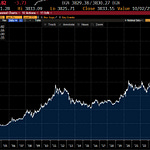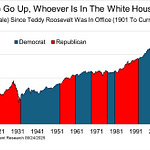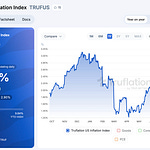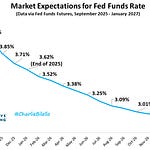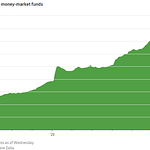To investors,
I have been reading one book per week this year. This past week’s book was The Creative Act: A Way of Being by Rick Rubin. Highly recommend reading it. If you are interested in the individual highlights that I made in the physical book, you can read those here. Hope you enjoy these notes every Monday morning.
Book’s main argument:
Rick Rubin was crowned the most important music producer of the last 20 years by MTV, so he knows a thing or two about the creative process. Rubin explains that creativity is not solely reserved for music artists though — in fact, every single human is an artist.
Throughout this book, he defines creativity and details how you can leverage it and what to do if you get stuck at any point. Rubin walks us through his Experimentation, Crafting, and Completion phases, while sharing tactical advice on how to improve whatever art you pursue.
5 Big Ideas:
💡 Idea #1 — Everyone is an artist. We all create things in our life. Embrace the act of creating and you will start enjoying life in a new way.
“Regardless of whether or not we’re formally making art, we are all living as artists.”
“To live as an artist is a way of being in the world. A way of perceiving. A practice of paying attention.”
You must take the time to practice. You will improve with more reps.
“Living life as an artist is a practice. You are either engaging in the practice or you’re not. It makes no sense to say you’re not good at it. It’s like saying, “ I’m not good at being a monk.” You are either living as a monk or you’re not.”
The more time we invest in our ability to recognize greatness, the better we will become at allocating our time and attention.
“If you make the choice of reading classic literature every day for a year, rather than reading the news, by the end of that time period you’ll have a more honed sensitivity for recognizing greatness from the books than from the media. This applies to every choice we make. Not just with art, but with friends we choose, the conversations we have, even the thoughts we reflect on. All of these aspects affect our ability to distinguish good from very good, very good from great. They help us determine what’s worthy of our time and attention.”
💡 Idea #2 — An idea will come into existence when its time has come. The person who brings the idea to life is not nearly as important as the idea turning into reality.
“If you have an idea you’re excited about and you don’t bring it to life, it’s not uncommon for the idea to find its voice through another maker. This ain’t because the other artist stole your idea, but because the idea’s time has come.”
When an idea’s time has come, it will always be a combination of old ideas in a new way. Nothing is new. Everything is made up of the past.
“There’s a time for certain ideas to arrive, and they find a way to express themselves through us.”
“Art is a circulation of energetic ideas. What makes them appear new is that they’re combining differently each time they come back.”
💡 Idea #3 — You have to follow your intuition. There will be many people in your life who will try to dissuade you from doing what you want. Hear them out, but be willing to ignore them.
“It’s not always easy to follow the subtle energetic information the universe broadcasts, especially when your friends, family, coworkers, or those with a business interest in your creativity are offering seemingly rational advice that challenges your intuitive knowing. To the best of my ability, I’ve followed my intuition to make career turns, and been recommended against doing so every time. It helps to realize that it’s better to follow the universe than those around you.”
Start with a beginner’s mind.
“Beginner’s mind is starting from a pure childlike place of not knowing. Living in the moment with as few fixed beliefs as possible. Seeing things for what they are as presented. Tuning in to what enlivens us in the moment instead of what we think will work. And making our decisions accordingly. Any preconceived ideas and accepted conventions limit what’s possible.”
You will doubt yourself along the creative process. That is normal. Realize it is happening and keep going.
“Self-doubt lives in all of us. And while we may wish it gone, it is there to serve us.”
“By accepting self-doubt, rather than trying to eliminate or repress it, we lessen its energy and interference.”
“We’re all different and we’re all imperfect, and the imperfections are what makes each of us and our work interesting. We create pieces reflective of who we are, and if insecurity is part of who we are, then our work will have a greater degree of truth in it as a result.”
You can stop pursuing the creative path if you don’t want to do it anymore. You are always in control.
“We are not obligated to follow this calling because we have a talent or skill. It’s worth remembering that we are blessed to get to create. It’s a privilege. We’re choosing it. We’re not being ordered to do this. If we’d rather not do it, let’s not do it.”
💡 Idea #4 — Competition is for losers. That is not how you create greatness.
“Art is about the maker. Its aim: to be an expression of who we are. This makes competition absurd.”
“Wanting to outperform another artist or make a work better than theirs rarely results in true greatness.”
What others see as competition is actually collaboration. You are working with other people and other ideas. Embrace it. Collaboration, not competition.
“Being made happy by someone else’s best work, and then letting it inspire you to rise to the occasion, is not competition. It’s collaboration.”
“Nothing begins with us. The more we pay attention, the more we begin to realize that all the work we ever do is a collaboration. It’s a collaboration with the art that’s come before you and the art that will come after. It’s also a collaboration with the world you’re living in. With the experiences you’ve had. With the tools you use. With the audience. And with who you are today.”
💡 Idea #5 — Rules are limiting. You should not only be comfortable breaking rules, but you should look for opportunities to do it often. Don’t let arbitrary rules kill your creativity.
“Rules, by their nature, are limitations.”
“The rules artists learn are different. They are assumptions, not absolutes. They describe a goal or method for short-term or long-term results. They are there to be tested. And they are only of value as long as they are helpful. They are not laws of nature.”
Rules can create average, sub-optimal work. Don’t aspire to be average.
“Rules direct us to average behaviors. If we’re aiming to create works that are exceptional, most rules don’t apply. Average is nothing to aspire to. The goal is not to fit in. If anything, it’s to amplify the differences, what doesn’t fit, the special characteristics unique to how you see the world. Instead of sounding like others, value your own voice. Develop it. Cherish it.”
The best artists break the rules and operate in their own realities.
“The artists who define each generation are generally the ones who live outside of these boundaries. Not the artists who embody the beliefs and conventions of their time, but the ones who transcend them.”
The great artists emulate children. They are childlike in many things they do.
“These childlike superpowers include being in the moment, valuing play above all else, having no regard for consequences, being radically honest without consideration, and having the ability to freely move from one emotion to the next without holding on to story.”
“The great artists throughout history are the ones able to maintain this childlike enthusiasm and exuberance naturally.”
Memorable quotes:
We can quiet our inside so we can perceive more on the outside, or quiet the outside so we can notice more of what’s happening inside.
The energy around you can be harnessed to elevate your work.
Of all the great works that we can experience, nature is the most absolute and enduring.
The person who makes something today isn’t the same person who returns to the work tomorrow.
There is no wrong way. There is only your way.
Ultimately, your desire to create must be greater than your fear of it.
Not all projects take time, but they do take a lifetime.
While the eyes and the mouth can be sealed, an ear has no lid, nothing to close. It takes in what surrounds it. It receives but can’t transmit. The ear is simply present to the world.
Innovation through ignorance.
To vary your inspiration, consider varying your inputs.
To dismiss an idea because it doesn’t work in your mind is to do a disservice to the art. The only way to truly know if any idea works is to test it. And if you’re looking for the best idea, test everything.
There are countless examples of imitation turning into legitimate innovation.
Remember that commercial success is completely out of your control.
Volume does not equal value.
Pomp’s Takeaways:
This book is full of new, refreshing ideas. Rick Rubin has a unique approach to creating art, so it is fascinating to read how he thinks about implementing this process to other areas of life.
My first big takeaway was Rubin’s refusal to accept social norms. For example, he rejects the idea of being yourself. He writes, “Defining one’s true self is not so simple. It may be impossible…The suggestion to be yourself may be too general to be of much use. There’s being yourself as an artist, being yourself with your family, being yourself at work, being yourself with friends, being yourself in times of crisis or in times of peace, and being yourself for yourself, when by yourself.” If you refuse to be put in a box, it naturally positions you with more flexibility to create things you find valuable. Don’t accept the norm. Reframe the game. Do things your way.
My second big takeaway was Rubin’s fascination with open-mindedness, curiosity, and the beginner’s mind. He talks about these concepts throughout the book. Sometimes he relates them, other times they appear independently. I took his fascination to be a strong signal that creativity is nearly impossible without curiosity. Don’t have a rigid mind. Ask questions. Work diligently to understand something new. Be humble enough to say “I don’t know. Can you explain?” A beginner’s mind is actually a sign of maturity and intelligence.
My third big takeaway was the importance of tuning out distractions. Traditional artists don’t only have to deal with the average distractions of social media and television, but they must also avoid succumbing to the pressures of the commercial side of art. If you are a true artist, you create for the love of art. There is a comparable situation for each of us in our daily lives. Don’t do things solely for money. Do them because you enjoy what you’re doing. Commercial success will eventually come.
Lastly, Rick Rubin explains that “a loyal audience can begin to feel like a prison.” This one hit me hard. I’ve been fortunate to create very large audiences on the internet, but there are times where the audience doesn’t like the same content that I’m interested in. Getting comfortable with the idea of losing part of your audience as you pursue something new is an idea I had to get comfortable with. Ultimately, pursuing your interests is the best way to remain authentic to yourself, and if I have learned one thing over the years, being authentic is the secret differentiator on the internet.
As I mentioned, this past week’s book was The Creative Act: A Way of Being by Rick Rubin. Highly recommend reading it. If you are interested in the individual highlights that I made in the physical book, you can read those here. Hope you enjoy these notes. Feel free to leave a comment - I read all of them.
-Pomp
Note: Make sure you are subscribed to receive these personal notes each Monday morning.
Announcement: I am hosting a conference at the Miami Beach Convention Center on March 4, 2023. Anyone can attend for free. The goal is to bring together people from different walks of life to debate important ideas that impact our society on a daily basis. The speakers are many of the most popular guests from the podcast over the last few years, along with a few surprises. If you’re interested in attending, you can read about the event details here:
You are receiving The Pomp Letter because you either signed up or you attended one of the events that I spoke at. Feel free to unsubscribe if you aren’t finding this valuable. Nothing in this email is intended to serve as financial advice. Do your own research.



